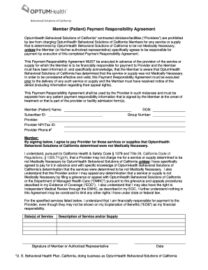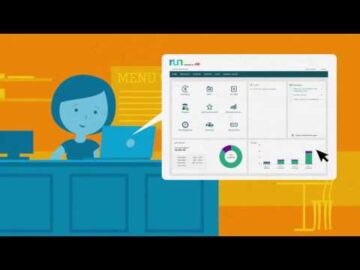
Process costing also tracks prime costs to assign direct material and direct labor to each production department (batch). Manufacturing overhead is another cost of production, and it is applied to products (job order) or departments (process) based on an appropriate activity base. Due to the practical difficulties of using actual costing, many companies instead use a normal costing system to obtain a close approximation of the costs on a timelier basis, especially manufacturing overhead costs. Material costs are calculated by summing all raw project materials, such as lumber, steel and concrete, plus material-related costs, such as their delivery to a job site.
Without a good system for tracking these costs, they don’t get factored into the price, which then means that they’ll have to be deducted from profits. Armed with this information about performance and productivity, it becomes possible to lower production costs by coming up with plans to improve the productivity of employees who do not meet performance expectations. Process costing can also accommodate increasingly complex business scenarios. While making drumsticks may sound simple, an immense amount of technology is involved.
Why Millions of Girls Are Doing Unpaid Care Work This Summer – TIME
Why Millions of Girls Are Doing Unpaid Care Work This Summer.
Posted: Thu, 03 Aug 2023 11:00:00 GMT [source]
This way, any potential issues, such as going over the budget can be identified and corrected while production is still ongoing. With job order costing, it becomes easy for a company to quote prices that ensure profitability for the company, but low enough to give the company an edge over its competitors. Job order costing is a bookkeeping method that is used to determine how much it costs a business to manufacture an individual unit of output.
Cost of goods sold
This level of specificity helps you more precisely bid similar projects in the future and improve budgeting by monitoring the many individual costs that go into a large construction project. Job costing also helps construction businesses manage their cash flow and protect their profit margins, especially when new requests and changes occur while a project is in progress. While the costing systems are different from each other, management uses the information provided to make similar managerial decisions, such as setting the sales price. For example, in a job order cost system, each job is unique, which allows management to establish individual prices for individual projects.
Once the direct and indirect costs are calculated, they’re added together and submitted to the client to give a quote for the job. If the customer is satisfied with the quote they can place the order and the production can begin. During the manufacturing process, each job is assigned a unique production number and will be identified by this number until the job is completed. The incurred indirect costs should be allocated to the job based on previous examples. In other words, the cost for this job is assigned based on the costs incurred in the past while doing a similar job.
Factory overhead would be allocated to individual jobs based on the portion of the $20,000 direct labor cost that is assigned to each job. If job number 45 had $9,000 in direct labor cost for the month, factory overhead of $10,800 ($9,000 × 120%) would also be allocated to the job. Construction job costing is a detailed pricing method used to accurately calculate project expenses by looking at all the granular costs for each project.
As shown in the below diagram, all the products are accumulated under the job order costing together. The requirement of one client in this industry is unique and different from the other one. They use a job order costing system because products would be based on the order given by the customer. The job order cost system will track and record the cost of producing each job, including material applied, labor cost and manufacturing overhead charges. This would be because each job is significantly different from the other, so it would have different charges for each job done.
Actual Costing vs Normal Costing
Because the frames have already been through each department, the additional work is typically minor and often entails simply adding an additional fastener to keep the back of the frame intact. Other times, all the frame needs is additional glue for a corner piece. Texas Monthly reports that Sandy found a way to write unapproved checks in the accounting system. He implemented his accounting system and created checks that were “signed” by the owner of the company, Bob McNutt.
The predetermined manufacturing overhead rate is discussed in detail in subsequent sections of this chapter. When manufacturing overhead is applied to the jobs in process, it is credited from the Manufacturing Overhead account and debited to the Work In Process account. The costs incurred during the manufacturing process are accumulated in inventory accounts within the organization’s accounting system. Assets are items that an organization owns that have future value to the organization. The inventory accounts commonly used in a job-order costing system include the Raw Materials account, Manufacturing Overhead account, Work in Process account, and Finished Goods account.
Learn How NetSuite Can Streamline Your Business
Direct Material is abbreviated DM, Direct Labor as DL, and Overhead as OH. Calculating the overhead cost is the most difficult part because you will have to rely on an estimation instead of an exact figure.
Commissioners consider jail control system update News, Sports … – NUjournal
Commissioners consider jail control system update News, Sports ….
Posted: Tue, 01 Aug 2023 06:02:03 GMT [source]
Process costing is optimal when the costs cannot be traced directly to the job. For example, it would be impossible for David and William to trace the exact amount of eggs in each chocolate chip cookie. It is also impossible to trace the exact amount of hickory in a drumstick. Even two sticks made sequentially may have different weights because the wood varies in density. Manufacturing departments are often organized by the various stages of the production process.
The job order costing process starts with the identification of requirements for a particular job. This step lays the foundation that will be used as a basis for estimating the costs of getting the job done. Job order costing allows businesses to monitor the process of production in real-time.
Best Account Payable Books of All Time – Recommended
Process costing usually examines all costs related to how many units are produced. Going back to our silk screen company example, first the cost of the t-shirts would be tracked (material costs). Second, the time that it takes designers to create the t-shirt design and printers to make the screens and print the shirts would be tracked (labor costs). Third, the ink and materials used to make the screens would be accounted for (overhead costs).

The formula for computing the departmental predetermined manufacturing overhead rates is presented in Exhibit 2-7. The similarities between job order cost systems and process cost systems are the product costs of materials, labor, and overhead, which are used determine the cost per unit, and the inventory values. While still in production, the work in process units are moved from one department to the next until they are completed, so the work in process inventory includes all of the units in the shaping and packaging departments.
Create a free account to unlock this Template
In addition to setting the sales price, managers need to know the cost of their products in order to determine the value of inventory, plan production, determine labor needs, and make long- and short-term plans. They also need to know the costs to determine when a new product should be added or an old product removed from production. By knowing the opening and closing balances of the inventory account in addition to the actual DM and DL costs and the estimated MOH costs, the COGM can be calculated. Eventually, you are going to notice that the job order costing system has become an important database that contains details and costs for each job. Most importantly, it helps you find the gaps and opportunities to determine whether you need to reduce or increase the production cost. Depending on your understanding of the situation you can develop strategies that allow you to control the costs.
Whereas, an organization that relies on machines instead of laborers might use machine hours as the allocation base. The processes to solve the following scenario are demonstrated in Video Illustration 2-4 below. Production used $13,500 of direct material and worked 21 direct labor hours at a rate of $20 per hour. Before multiple predetermined manufacturing overhead rates can be computed, manufacturing overhead costs must be assigned to departments or processes.
Documents that you need for Job Order Costing:
Direct expenses are the costs that can be traced back to the spending of a specific department. These include expenses like design costs, tool maintenance and purchasing equipment that is directly used to manufacture the product. They’re listed under the COGS (Cost of Goods Sold) section in the income statement.
- Whereas the guards or the janitors who are employed to supervise and assist during the production process are indirect laborers and are not included as a part of direct labor.
- Since the company manufactures items based on special orders, it uses a job order costing system to track the costs for each job as the product is manufactured.
- In addition to setting the sales price, managers need to know the cost of their products in order to determine the value of inventory, plan production, determine labor needs, and make long- and short-term plans.
- The processes to solve the following scenario are demonstrated in Video Illustration 2-3 below.
- Materials and labor can be readily traced to each job, and the cost assignment logically follows.
Rock City Percussion makes 8,000 hickory sticks per day, four days each week. The sticks made of maple and birch are manufactured on the fifth day of the week. It is difficult to tell the first drumstick made on Monday from the 32,000th one made on Thursday, so defined benefit plan internal revenue service a computer matches the sticks in pairs based on the tone produced. Job order costing allows you to calculate the whole cost of a particular project in an extremely efficient manner. It helps you find mistakes, gaps for improvement, determine profitability, etc.